Practicing an unbalanced diet following the Western dietary pattern is associated with an imbalance in the intake of macronutrients and healthy nutrients, the main ones being:
Low intake of fiber, polysaccharides, alkaloids, saponins, polyphenols and other nutrients of plant origin
A deficiency of healthy nutrients such as fiber, polysaccharides, alkaloids, saponins, polyphenols and other molecules occurs as a consequence of reduced consumption of a variety of fruits and vegetables, legumes, raw nuts and whole grains.
Fiber
Fiber, unlike other food components such as fats, proteins or carbohydrates, is not absorbed by your body. Instead, it passes relatively intact through your stomach, small intestine and colon and out of your body. It is divided into soluble and insoluble fiber.
Soluble fiber dissolves in water and forms a gel-like substance that helps lower blood cholesterol and glucose levels. Soluble fiber is found in oats, peas, beans, apples, citrus fruits, carrots, barley, etc.
Insoluble fiber
This type of fiber aids the movement of substances through the gastrointestinal system and increases the amount of bowel movements, so it can be helpful for people who suffer from constipation. Wholegrain flour, wheat bran, nuts, beans and vegetables such as cauliflower, green beans and potatoes are good sources of insoluble fiber.
The amount of soluble and insoluble fiber varies from one plant food to another. To get the greatest health benefit, consume a wide variety of high-fiber foods.
A diet high in soluble and insoluble fiber (20 to 30 grams a day) has numerous health effects on the body such as:
Polyphenols
Polyphenols are a category of substances that are naturally found in plant foods, such as fruits, vegetables, herbs, spices, tea, dark chocolate and wine.
Polyphenols (derived from the Greek word polos meaning many) are a large family of naturally occurring organic molecules characterized by multiple phenolic groups.
Foods rich in polyphenols are fruits, vegetables, herbs, spices, tea, dark chocolate, wine, etc.
Chemical structure of garlic and raspberry polyphenols:
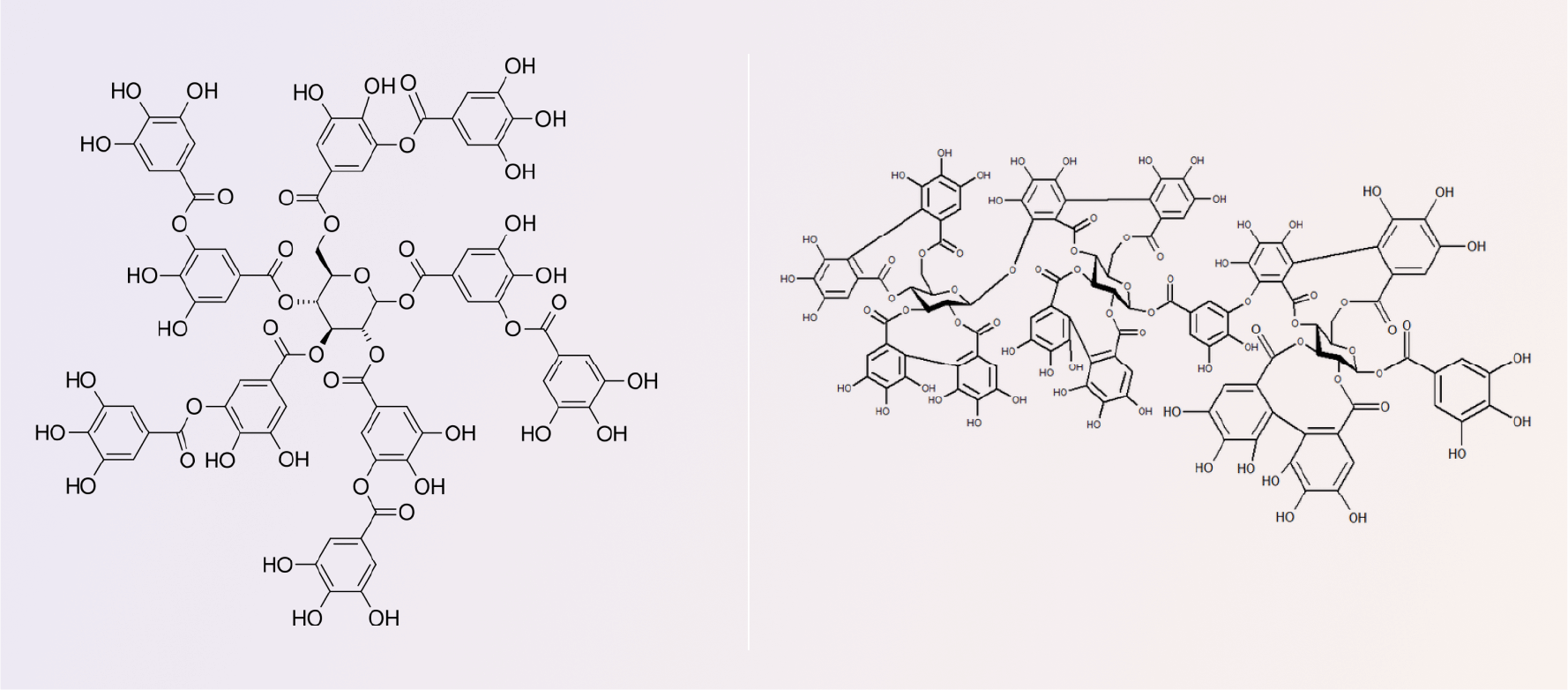
Due to the presence of multiple phenolic groups polyphenols act as antioxidants, which means they can neutralize harmful free radicals that would otherwise damage your cells and increase the risk of developing multiple chronic noncommunicable diseases such as cancer, diabetes, heart diseases, etc. In addition to helping reduce oxidative stress and inflammation polyphenols accumulate in the gastrointestinal tract where they act as prebiotic food that nourishes and stimulates the development of a healthy gut microbiome. Polyphenols are divided into several main groups according to their structure:
Low polyphenol intake below 600 mg/d as a result of an unhealthy diet is associated with a 37% increase in the risk of death from a CNCD compared to people with high daily polyphenol intake (>900 mg/d).
The average concentration of polyphenols may vary depending on factors such as variety, maturity level and cultivation method. The chart below shows the average concentration of some of the fruits and vegetables rich in polyphenols per 100 g of raw weight most commonly consumed in our daily lives:
Levels of polyphenols in foods per 100 g raw weight
Saponins are naturally occurring glycoside compounds, part of the defense mechanisms of plants, which possess a number of biological properties, such as antimicrobial, antifungal, antiparasitic properties, etc. Saponins in plants are divided into 2 main groups – terpenoid and steroidal saponins.
The terpenoid saponins are found in many legumes (soybeans, chickpeas, beans, peanuts, broad beans, kidney beans and lentils), ginseng leaves, sunflower seeds, horse chestnut, licorice roots, spinach leaves, tea leaves, quinoa seeds, sugar beet, etc. Steroid saponins can be found in oats, tomato seeds, sweet potatoes, fenugreek seeds, ginseng roots, asparagus, eggplant, chili peppers, etc.
Used in the recommended daily amounts as food, saponins like polyphenols have a number of healthy effects on the body such as antioxidant, immunostimulant, hypocholesterolemic, hypoglycemic and anti-inflammatory effects that contribute to the prevention of multiple chronic diseases.
The Western diet is associated with consumption of high levels of saturated fatty acids (cow butter, animal fat, palm oil), Omega 6 and 9 fatty acids from refined oils such as cooking oil, corn oil, flaxseed oil, etc., increased consumption of trans fats (margarine, crisps, snacks, etc.) and low consumption of the healthy marine-derived Omega-3 fatty acids EPA (eicosapentaenoic acid) and DHA (docosahexaenoic acid), in extreme disproportionate ratios of 20 to 30:1.
Omega-3 EPA/DHA deficiency and disproportionate consumption of saturated and unsaturated fats is associated with the pathogenesis of many diseases, including cardiovascular diseases, cancer, inflammatory and autoimmune diseases.
Micronutrients (vitamins and minerals) are essential nutrients that the human body needs in relatively small amounts unlike macronutrients (proteins, fats and carbohydrates). Vitamins and minerals are essential for the body’s homeostasis and good health. They are important for good immune function, bone health, blood clotting, nerve function, wound healing, cell signaling, enzyme activation, hormone production and many other body processes.
A balanced diet, including a variety of fruits, vegetables, whole grains, lean proteins, dairy products, etc., ensures the adequate intake of necessary vitamins and minerals. The Western diet and the lack of dietary diversity is often the main cause of development of micronutrient deficiencies.
The role of minerals in maintaining the health of the human body:

Calcium
Calcium is the most abundant mineral in the body and is best known for its role in maintaining healthy bones and teeth. It is also involved in muscle function, nerve signals, blood clotting and hormone secretion.
Sources: Dairy products, broccoli, almonds, sardines (with bones)
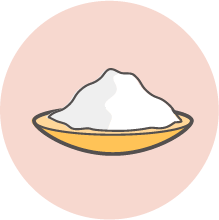
Sodium
Sodium is another electrolyte that helps regulate fluid balance and maintain proper nerve and muscle function. It is important for maintaining blood pressure and pH balance in the body.
Sources: Salt

Phosphorus
Phosphorus works closely with calcium to build and maintain
healthy bones and teeth. It is also essential for energy production, DNA synthesis and cell membrane structure.
Sources: Meat, fish, dairy products, eggs, lentils, nuts, brown rice, whole grains
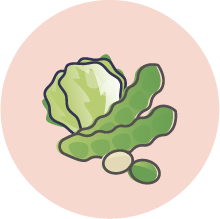
Magnesium
Магнезият участва в стотици биохимични реакции в организма. Той играе жизненоважна роля в мускулната и нервната функция, производството на енергия, синтеза на ДНК, здравето на костите и регулирането на кръвното налягане.
Източници: Спанак, пълнозърнести храни, бобови култури, ядки и семена

Iron
Iron is crucial for the production of hemoglobin, the protein in red blood cells that carries oxygen throughout the body. It is also involved in energy production and immune function.
Sources:Molasses, red meat (beef, lamb, pork, liver), seafood (tuna, sardines, mussels, shrimp), legumes, nuts and seeds, whole grains

Zinc
Zinc is involved in multiple enzymatic reactions in the body and plays an important role in immune function, wound healing, DNA synthesis, growth and development.
Sources: Seafood, red meat, poultry, legumes, soy products

Potassium
Potassium is an electrolyte that helps maintain proper
fluid balance, nerve function and muscle contractions.
It also plays a role in maintaining a healthy heart rhythm and
blood pressure.
Sources: Bananas, sweet potatoes, spinach, avocado, watermelon, melon
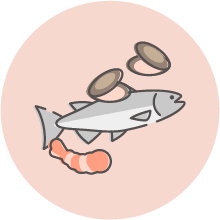
Copper
Copper is important for red blood cell production, collagen synthesis, energy production and antioxidant protection. It also plays a role in brain development and function.
Sources: Seafood, mushrooms, liver, nuts and seeds

Iodine
Iodine is essential for the production of thyroid hormones that regulate metabolism, growth and development. It is particularly important for proper brain development during pregnancy and early childhood.
Sources: Seaweed, fish, seafood, iodized salt, eggs
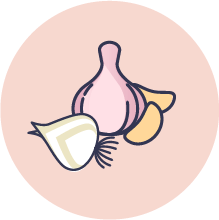
Selenium
Selenium acts as an antioxidant and is involved in DNA synthesis, thyroid hormone metabolism and immune function. It also plays a role in fertility and reproductive health.
Sources: Brazil nuts, fish, seafood, meat, eggs, mushrooms, garlic and onions.
Ролята на витамините в поддръжката на човешкото здраве:
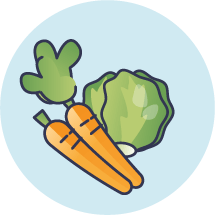
Vitamin A is essential for maintaining healthy vision, boosting the immune system, reducing the risk of chronic diseases, healthy skin, re
productive health, healthy bones and teeth.
Sources: Eggs, dairy products, carrots, sweet potatoes, spinach, broccoli, lettuce

Vitamin D is essential for regulating calcium and phosphorus absorption, normal immune system function, bone and teeth growth and development, brain health, hormonal balance and regulation of
inflammation.
Sources: Algae (spirulina and chlorella), mushrooms, eggs, fish and fish oils

Vitamin E is a strong antioxidant that reduces inflammatory reactions, reduces the risk of developing thromboses, is essential for good immune function, healthy skin and good vision.
Sources: Spinach, parsley, apricot, broccoli, avocado, mango, kiwi, almonds, hazelnuts, peanuts

Vitamin K is important for bone metabolism and bone strengthening, improves cognitive (mental) abilities, is required for blood clotting and
cardiovascular health. It has antioxidant properties important for reducing inflammatory processes.
Sources: Spinach, apricot, broccoli, lettuce, cauliflower, Brussels sprouts, parsley, green tea

Vitamin C (ascorbic acid) is essential for boosting the immune
system, wound healing, healthy skin and collagen production, cardiovascular health, iron absorption and protection of cells against oxidative stress.
Sources: Citrus fruits, strawberries, kiwi, cocoa and dark chocolate
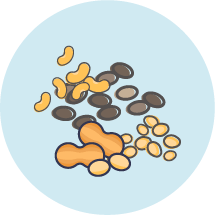
Vitamin B1 (thiamine) plays an important role in the body for carbohydrate breakdown and glucose metabolism, energy (ATP) production, muscle and nerve cell function, heart function, cognitive processes,
memory and concentration.
Sources: Rice, wheat grains and whole grains, raw almonds and walnuts
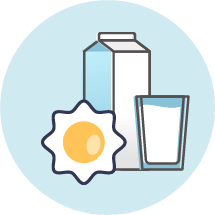
Vitamin B2 (riboflavin) helps the body break down food, absorb nutrients. It is involved in tissue maintenance, is required for the production of red blood cells and cell energy (ATP) and has anti-inflammatory properties.
Sources: Dairy products, eggs, broccoli, spinach, peas and asparagus, fish, beef, chicken and pork
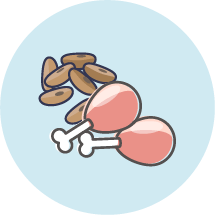
Vitamin B3 (niacin) is a micronutrient required for the regulation of blood sugar levels and proper metabolism, nervous system function and protection of nerves against oxidative stress and degeneration. Improves skin and hair health, required for the regulation of bone density and mineralization processes.
Sources: Whole grain bread, whole grains, cereals, poultry, fish and seafood

Vitamin B5 (pantothenic acid) is essential for the synthesis of coenzyme A (CoA) required for cell energy production. Contributes to skin wounds healing, healthy hair and eyes. Required for the proper nervous system, liver and gastrointestinal system function, is important for the production of red blood cells and the synthesis of sex hormones.
Sources: Mushrooms, fish and seafood, nuts and seeds, avocado, potatoes, corn, broccoli

Vitamin B6 (pyridoxine) is an essential vitamin that plays an important role in the prevention and treatment of anemia, helps the production of red
blood cells, is involved in the production of neurotransmitters (serotonin) and reduction of anxiety. It is important for brain development and function, heart health and good vision.
Sources: Bananas, oatmeal, fish and seafood, chicken and turkey, corn

Vitamin B7 (biotin) is a water-soluble vitamin required for the growth and development of all cells.
It is essential for energy metabolism, fat, carbohydrate and protein breakdown.
It helps maintain a healthy nervous system, nails, hair and
skin.
Sources: Whole grains, rice, eggs, fish and seafood

Vitamin B9 (folic acid) is essential for DNA synthesis and
repair, cell growth and division, the production of
red blood cells, proper nervous system and
brain function.
Sources: Spinach, kale, broccoli, asparagus, Brussels sprouts, green beans, artichokes, oranges, tangerines, grapefruit, lemons, avocado, beans and lentils.
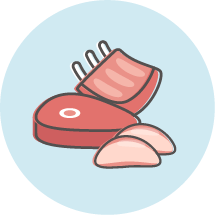
Vitamin B12 (cobalamin) has an essential role in the production of red blood cells, DNA synthesis, nerve function, cell metabolism and energy (ATP) production.
Sources: Dairy products, eggs, fish and seafood, beef, pork, chicken, liver, nutritional yeast
Any abnormal levels of both minerals and vitamins may lead to deregulation of the body’s function, cause disorders in cell processes and dysfunction of tissues and organs, which may subsequently result in development of pathologic conditions. Therefore, early detection of abnormalities in concentration of macro- and micronutrients and vitamins in serum samples is a reliable indicator of human homeostasis. For some of the deficiencies developed a compensatory intake of dietary supplements is recommended after consulting a healthcare professional.
Vitamin D:
This is the most common deficiency among humans. It occurs in about 20% of the population in Northern Europe, 30 to 60% in Western, Southern and Eastern Europe and up to 80% in Middle Eastern countries. It develops as a consequence of limited exposure to sunlight due to working indoors, as a consequence of air pollution and excessive use of sunscreens. Some common symptoms of deficiency include fatigue, muscle weakness, bone pain, depression and impaired wound healing.
Iron:
Iron deficiency is widespread, especially among women of child-bearing potential due to blood loss during menstruation. Vegetarians and vegans may also be at higher risk of deficiency due to the lower bioavailability of iron in plant nutritional sources. Iron deficiency may manifest with development of anemia characterized by symptoms of weakness, pale skin, shortness of breath, dizziness, cold hands and feet, brittle nails and headache.
Calcium:
Insufficient calcium intake is common, especially among adolescents and the elderly. This may lead to bone-related problems such as reduction in bone density and fractures.
Vitamin B12:
This deficiency is more common among older adults and people with gastrointestinal disorders that affect the vitamin absorption, as well as those who follow a vegan diet since Vitamin B12 is found primarily in animal products. It may manifest with shortness of breath, headache, indigestion, loss of appetite, palpitations, vision problems, feeling weak or tired.
Iodine:
Although iodine deficiency is less common in Western countries due to the widespread use of iodized salt some population groups, such as pregnant women and people who avoid salt, may still be at risk. Symptoms of iodine deficiency include fatigue, weight gain, constipation, dry skin and hair loss. Severe iodine deficiency may lead to goiter, hypothyroidism and cognitive disorders.
Vitamin B9 (folic acid):
Folic acid deficiency is a cause for concern, especially among pregnant women, as it plays a crucial role in proper fetal development. Approximately 30 to 50% of the human population carries at least one copy of the MTHFR gene mutation. This mutation may affect the body’s ability to process Vitamin B9. In the presence of such a mutation it is recommended to take methylated folic acid to correct its deficiency.
Symptoms the deficiency may manifest with are cognitive disorders such as memory loss, confusion, depression, fatigue, weakness, pale skin and a drop in hemoglobin. Gastrointestinal problems such as diarrhea, loss of appetite, weight loss, mouth ulcers, tongue swelling and changes in taste perception.
Magnesium:
Magnesium deficiency may be due to poor diet, certain medical conditions or the use of certain drugs. It often manifests with symptoms such as muscle cramps, fatigue and irregular heartbeat, etc.
Vitamin A:
Although less common in developed countries, Vitamin A deficiency may still occur, especially in low-income population or people with limited access to a variety of foods. This deficiency may lead to visual disorders and weakened immunity.
Vitamin C:
Although scurvy, the disease resulting from severe Vitamin C deficiency, is rare in developed countries, suboptimal Vitamin C intake is still relatively common. This may be due to insufficient consumption of fruits and vegetables, which are the main nutritional sources of Vitamin C. Symptoms of moderate Vitamin C deficiency may include fatigue, weakened immunity and slow wound healing.
Vitamin E:
Although Vitamin E deficiency is less common than some other micronutrients, Vitamin E intakes may be suboptimal in some population groups, such as in people with very low body fat or those who consume little nuts, seeds and vegetable oils. Symptoms of Vitamin E deficiency may include muscle weakness, vision problems and impaired immune function.